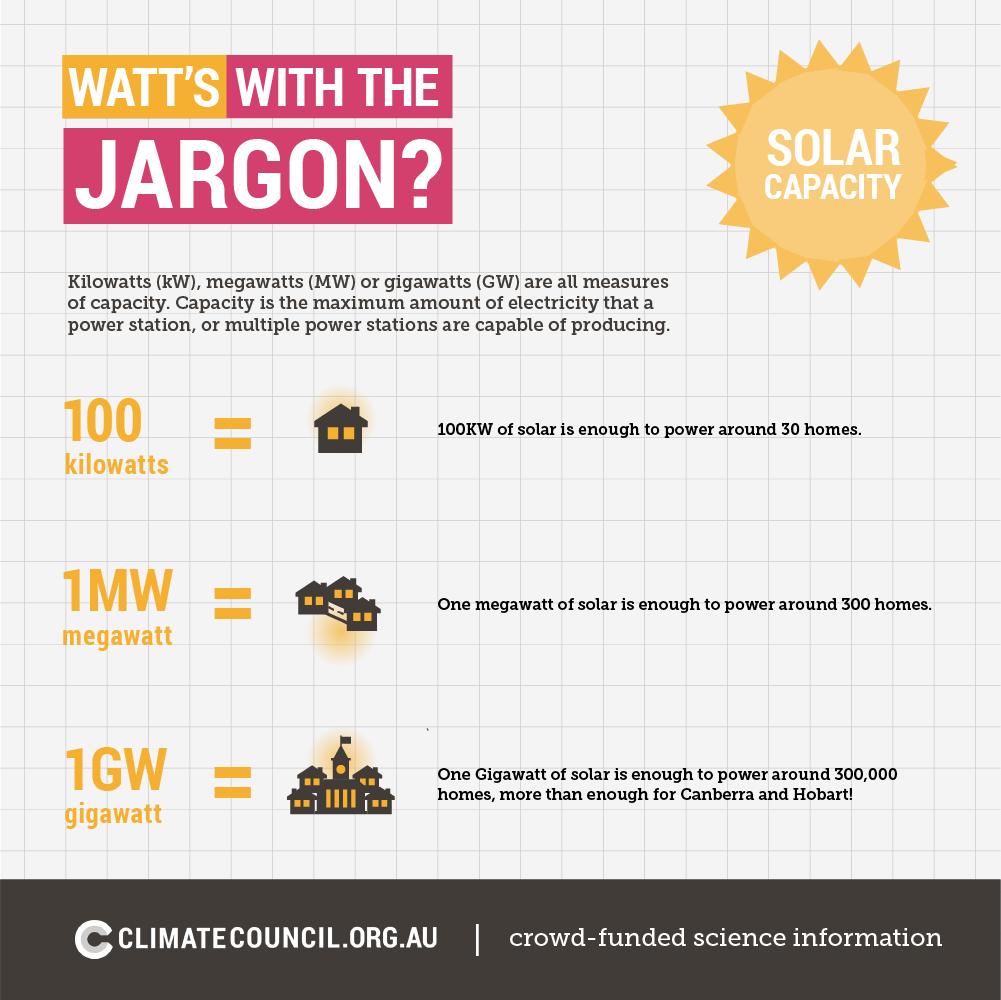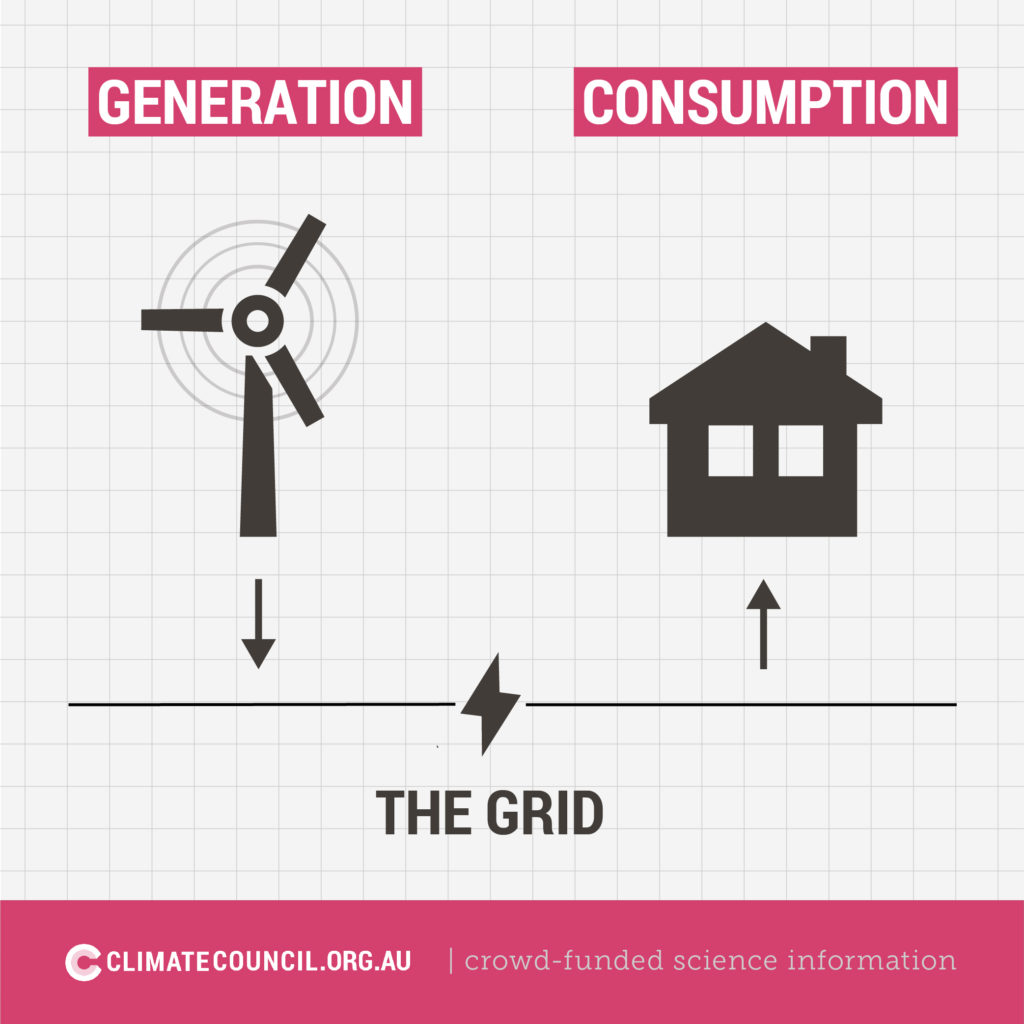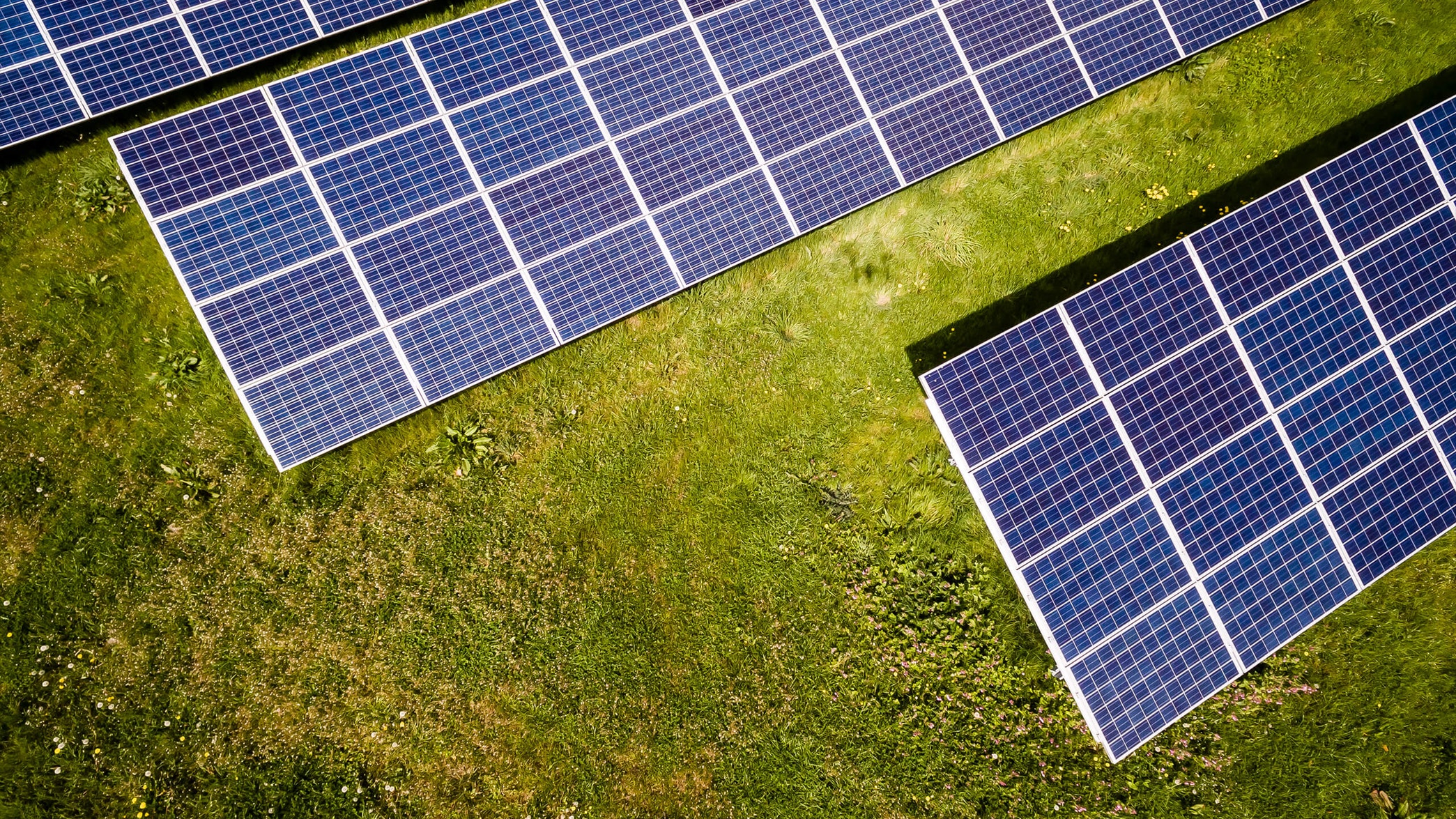Kilowatts? Megawatts? Megatron?
Sometimes information about energy and renewables can be full of confusing jargon. Sure, a megawatt sounds big, but what does it actually mean? Can it save you when you’re on 3% battery, or can it power your whole street on a 40 degree day with everyone blasting the AC?
We thought we’d break it down so you can talk the talk when it comes to renewable technology!
Capacity
Kilowatts (kW), megawatts (MW) or gigawatts (GW) are all measures of capacity. Capacity is the maximum amount of electricity that a power station, or multiple power stations are capable of producing.

So watt’s what?
- A typical Australian household putting in solar installed around 5.5kW of solar capacity in 2017 (1)
- A typical wind turbine has a capacity of between 1.5 – 3MW (or 1,500 – 3,000kW)
- The total capacity of Australia’s electricity supply is around 63 GW (2)
Electricity generation is different to capacity. Capacity refers to the maximum amount of electricity that can be produced at any one time, and generation is the amount of electricity that is actually generated over a period of time. And then, you have consumption. Energy consumption is measuring how much electricity you are using over a period of time.
So when we are talking energy, generation is the amount of electricity actually produced by a wind, solar or coal power station over a period of time. It’s measured in kilowatthours (kWh), megawatthours (MWh) or gigawatthours (GWh). These terms are also used when describing electricity consumed by a household, a company or Australia as a whole.

So, watt’s what?
- A typical 3MW wind turbine generates around 8,000MWh over a year (5)
- The total amount of electricity generated in Australia each year is 248,000 GWh (2)
- An average household consumes around 4,800kWh in Victoria, 7,200kWh in New South Wales and 8,000kWh in Queensland (4)
- A typical laptop running for 8 hours, consumes around 0.5 kWh (7)
- A dishwasher consumes 1-2kWh of electricity every cycle (8)
There you have it, the low-down on energy generation and consumption!
References:










